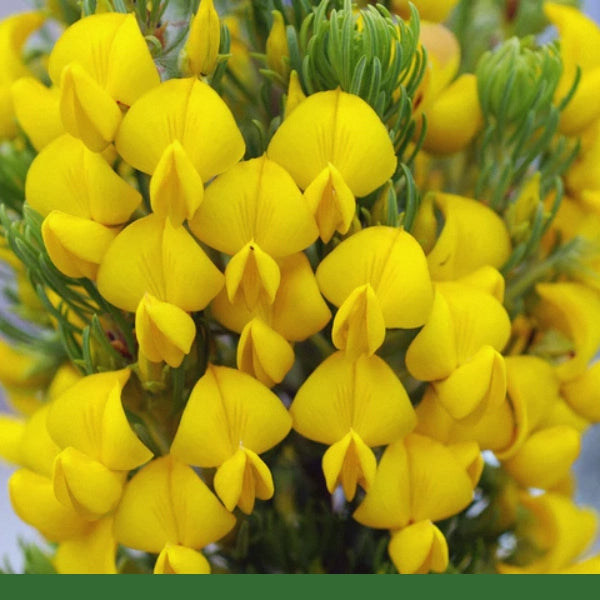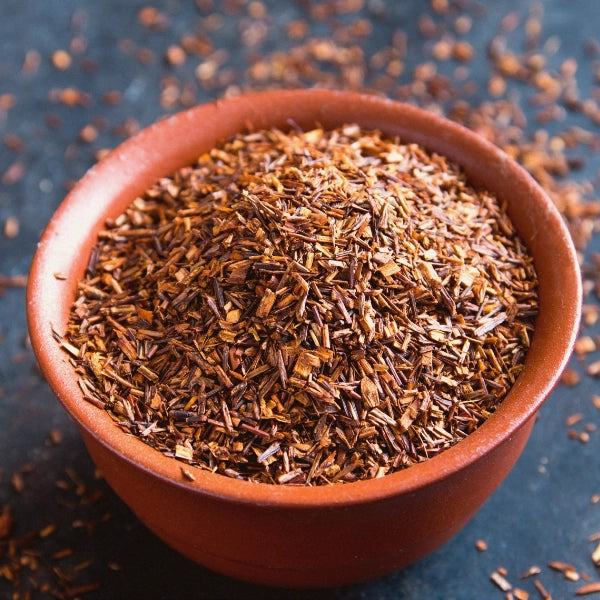Honeybush (Cyclopia intermedia) - Dried Herb, Organic
- Regular price
- $14.10
- Sale price
- $14.10
- Regular price
-
- Unit price
- per
Couldn't load pickup availability


Honeybush is an evergreen shrub with woody stems that produces trifoliate (three-part) leaves that are deep green and leathery and the plant produces bright yellow flowers. Honeybush was named because the flowers smell of honey. Carpenter bees are attracted to the sweet-smelling flowers and are responsible for most of the pollination.
Honeybush, or Heuningbos in Afrikaans, is a genus of some 20 species of flowering plants in the legume family, Fabaceae of the subfamily Faboideae. There are dozens of species of Honeybush tea found in the wild, of which mainly 4 or 5 are in widespread home or commercial use. It grows only in small areas in the southwest and southeast of South Africa. One of six species in the genus, Melianthus major is in the family Melianthaceae native to drier areas of the southwestern Cape in South Africa. It is easy to grow, so has been used as a garden plant worldwide for its attractive foliage. Honeybush is used as a seasonal ornamental in cool climates.
Honey bush is a cousin of Rooibos and has remarkably similar properties but a different flavour: Rooibos tastes sweet, earthy and slightly nutty; and Honeybush tastes like wood and honey. Fermented leaves and stems of the Honeybush shrub are used to brew Honeybush tea.
Settlers to South Africa have been interested in the medicinal benefits of Honeybush tea for hundreds of years, although use of Honeybush probably originated with the indigenous Khoisan people of Southern Africa. International interest in Honeybush is traced back to the tea trade of the Dutch and the British in 1652. Botanists began cataloguing the rich flora of the cape soon after and then the Honeybush plant was noted in botanical literature by 1705.
The Khoisan tribe of the South African Cape were also using Honeybush tea for treatment of coughs and other upper respiratory symptoms associated with infections. Honeybush contains very small amounts of a variety of minerals, including calcium, iron, and zinc; as well as beneficial plant compounds that have antioxidant activity.
Properties:
The taste and energetics of Honeybush are floral like Rose, fruity, woody, like honey and slightly astringent and cooling. Honeybush has an affinity to the respiratory system, immune system, heart, pancreas, metabolism, digestive system, nervous system, liver and musculoskeletal system. Combine Honeybush with Lemon Peel, Orange Peel or Mint for a nice refreshing flavour.
How to use:
1 teaspoon of Honeybush to one cup of boiling water. Simmer for 15 minutes, strain and drink up to three cups a day. Honeybush tea leaves may be re-steeped and used for a second cup.
To make iced Honeybush tea, follow the same instructions but pour the finished tea into a tall glass tumbler and add ice. You can also cool the tea in the refrigerator to enjoy at another time.
Cautions & contraindications:
This information is for educational purposes only and is not intended to diagnose, treat or cure any disease or illness. Please consult your healthcare provider prior to the use of this product if you are pregnant, nursing, taking medications or have a medical condition. Individual results may vary.

